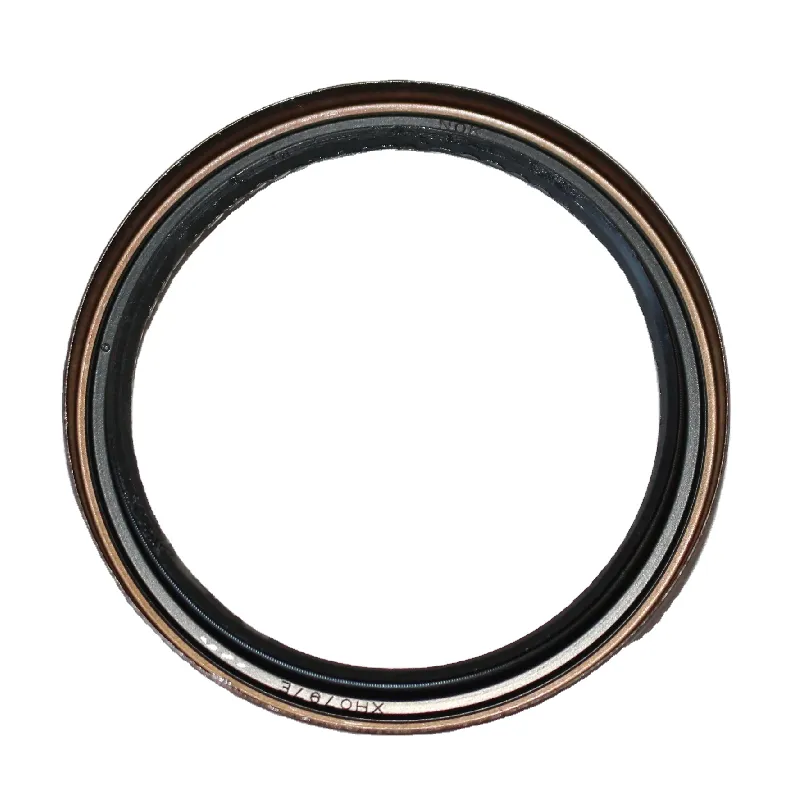Understanding the Importance of Pulley Oil Seals in Machinery Maintenance
Understanding Pulley Oil Seals Essential Components for Engine Performance
Oil seals, also known as shaft seals, play a critical role in the proper functioning of various mechanical systems, especially in automobiles and industrial machinery. Among them, pulley oil seals are specifically designed to prevent the leakage of lubricants from the rotating shafts connected to pulleys. Understanding their structure, function, and maintenance can significantly enhance engine performance and longevity.
What is a Pulley Oil Seal?
A pulley oil seal is a type of mechanical seal that fits around a rotating shaft and is typically made of rubber or other elastomeric materials. It is installed in a housing where the pulley is mounted to ensure a tight fit that keeps lubricants contained within the engine's internal components. The seal features a sealing lip that contacts the shaft, creating a barrier against oil leaks, dirt, and contaminants that could impair the function of the engine.
Importance of Pulley Oil Seals
1. Preventing Oil Leakage One of the primary functions of a pulley oil seal is to prevent oil leakage. Oil leakage not only leads to reduced lubrication but can also create operational issues and environmental hazards. Oil losses may force the engine to work harder, which can lead to overheating and decrease the overall performance and efficiency.
2. Contaminant Protection The seal also plays a crucial role in keeping out dirt and other contaminants which could enter the engine. Contaminants can cause substantial damage to internal parts, leading to increased wear and tear or even catastrophic engine failure.
3. Maintaining Pressure The seal helps in maintaining the necessary pressure within the engine’s lubrication system. This pressure is vital for the proper distribution of oil to various moving parts, enabling them to operate smoothly.
Types of Pulley Oil Seals
There are several types of pulley oil seals, each designed for specific applications
- Standard Seals These are the most commonly used seals for general applications, providing reliable performance under normal operating conditions.
pulley oil seal

- High-Temperature Seals Designed for applications involving high temperatures, these seals are made from heat-resistant materials that can withstand extreme conditions without deforming or degrading.
- Heavy-Duty Seals These are manufactured for more demanding environments, typically used in industrial machinery or heavy-duty vehicles where high pressures and greater wear are concerns.
Installation and Maintenance
Correct installation of pulley oil seals is essential to their effectiveness. If a seal is improperly installed, it may lead to leaks or premature failure. Here are some tips for ensuring proper installation
1. Clean Installation Surface Ensure that the surface where the seal will be installed is clean and free of debris. Any contamination can compromise the seal's ability to function properly.
2. Use Proper Tools Use appropriate tools to install the seal without damaging it. A seal installation tool can help ensure that the seal is seated evenly.
3. Check Alignment Ensure that the shaft is aligned correctly with the pulley to avoid unnecessary friction, which can lead to premature seal wear.
4. Regular Inspections Periodically inspect the pulley oil seals for signs of wear or damage. Signs of leakage around the seal indicate that it might need replacement.
Conclusion
In conclusion, pulley oil seals are vital components that contribute to the reliability and efficiency of engines and machinery. By preventing oil leaks, protecting against contaminants, and maintaining pressure, these seals ensure that systems function smoothly. Understanding their importance and implementing proper installation and maintenance practices can save time and money by avoiding costly repairs and replacements. Ultimately, investing attention into such small yet significant components can lead to enhanced performance and increased lifespan of engines and mechanical systems.
-
Simplifying Oil Changes: A Comprehensive Guide to Oil Drain Plugs and Their Variants
News Aug.04,2025
-
Mastering Oil Drain Maintenance: Solutions for Stripped, Worn, and Upgraded Oil Plugs
News Aug.04,2025
-
Fixing Oil Pan Plug Issues: Leaks, Stripped Nuts, and the Right Replacement Solutions
News Aug.04,2025
-
Everything You Need to Know About Oil Drain Plugs: Sizes, Fixes, and Upgrades
News Aug.04,2025
-
Choosing the Right Oil Drain Plug: A Guide to Sizes, Materials, and Drain Innovations
News Aug.04,2025
-
A Complete Guide to Automotive Drain Plugs: Types, Problems, and Innovative Solutions
News Aug.04,2025
-
The Ultimate Guide to Car Repair Kits: Tools and Essentials Every Driver Should Own
News Aug.01,2025
Products categories















